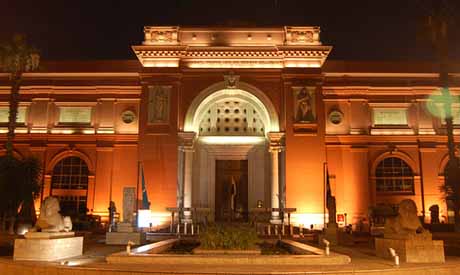
The facade of the Egyptian Museum in Tahrir
An Egyptian Museum official said that a special ceremony is being organised to mark its 113th anniversary on Monday.
"Visitors will pay no entrance fee for the day. Art and musical performances will take place in the museum’s garden and directors and officials working at the museum will be honored for their tremendous efforts," Khaled El-Enani, General Supervisor of the Egyptian Museum, told Ahram Online.
Minister of Antiquities Mamdouh Eldamaty, as well as a number of artists, public figures, members of the Egyptian Museum Friends Association and university students will attend the event. All the visits will be led for free by volunteers tour guides.
The Egyptian Museum is home to the largest collection of ancient Egyptian antiquities in the world. It displays 120,000 artefacts with twice that number in storage.
The museum was first build in 1835 near Al-Azbakeyah Garden and in 1855 was moved to the Cairo Salaheddin Citadel. In 1855, the Egyptian government gave Archduke Maximilian of Austria many of the artefacts; these are now in the Kunsthistorisches Museum in Vienna.
In 1858, following the establishment of Egypt’s Antiquities Service under the direction of French archaeologist August Mariette, a new museum was established at Boulaq Nile bank.
But regretfully in 1878, the building suffered significant damage from Nile River flooding. In 1892, the collections were moved to a former royal palace in Giza where they remained safe until 1902 when the museum in Tahrir Square was built.
Now, as the museum overflows with its treasured collection, a new museum named the Grand Egyptian Museum (GEM) is under construction on the Giza plateau on Cairo's outskirts to house such a collection. Upon completion of this project, the Tahrir Square museum will be repurposed to display statues and different ancient Egyptian art techniques.
Short link: